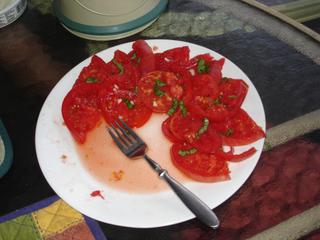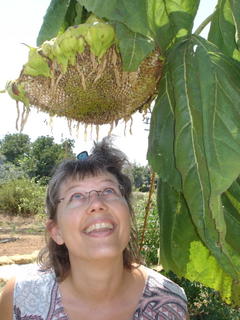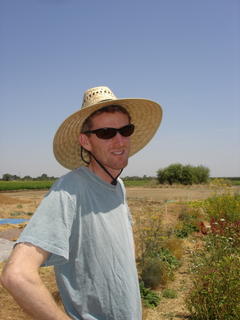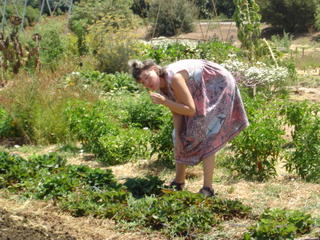Justin and I were just talking again about so-called sustainable living and the impact of all the decisions we get to (have to) make on a daily basis, living in an industrialized society.
How many of the things we buy are connected in some way to activities that have caused rapid urbanization and ecological devastation? What's the history of the sponge with which we wipe off the kitchen counter?
I recently added a water delivery system to my garden: black polypipe and a number of small plastic parts that allow water to come out right where I want it to. Okay, the plastics are all from fossil fuels, right? I have no idea what the process of turning petroleum into polypipe is, but I'm guessing it's not a one-step process! Think of the transport all along the way. Yes, I know the same idea has been written about for running shoes, t-shirts, etc., but it still seems useful to think about it in terms of something that I've bought to help conserve water, grow more local food, etc.
Since cities already exist, and since the surface of the planet cannot support everyone going "back" to the land, it seems important to think of urban solutions. What has more global impact? Trucking food into cities, or carting people around within cities (and suburbs)?
What happens when you compare the costs (and I'm not talking about money only, of course) of continuing to consume at current levels and the costs of a sudden disruption of the global economy? Imagine that nothing is being traded between the US and China, for example. Would massive unemployment of the poorest people in both countries result?What environmental effects does an economic recession have?
Here in the Northern Territory, almost everything comes from far away. Even the resources being mined are not being made into anything of immediate local use, that I know of. Back to food (obviously one of my favorite topics): nutrition (and health generally) is notoriously poor out in many indigenous communities (possibly among whites on remote cattle stations as well; I have never heard statistics for them). What is the best solution for people in those communities and for the planet? What is the best
theoretical solution and what has the best chance of success?
Just something else to chew on...







